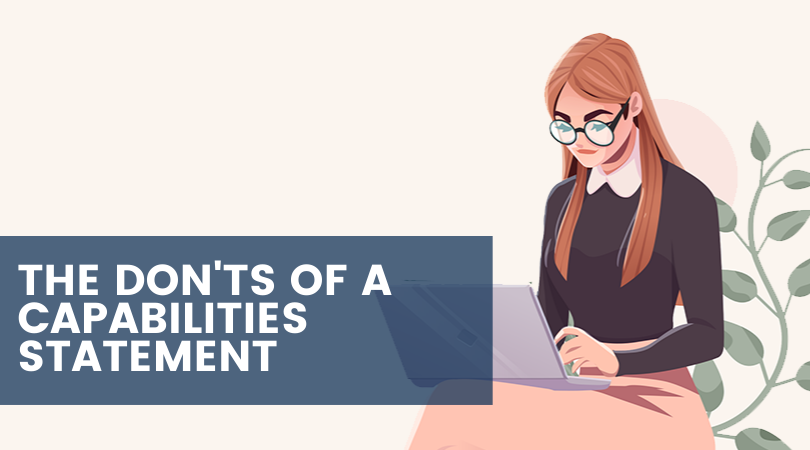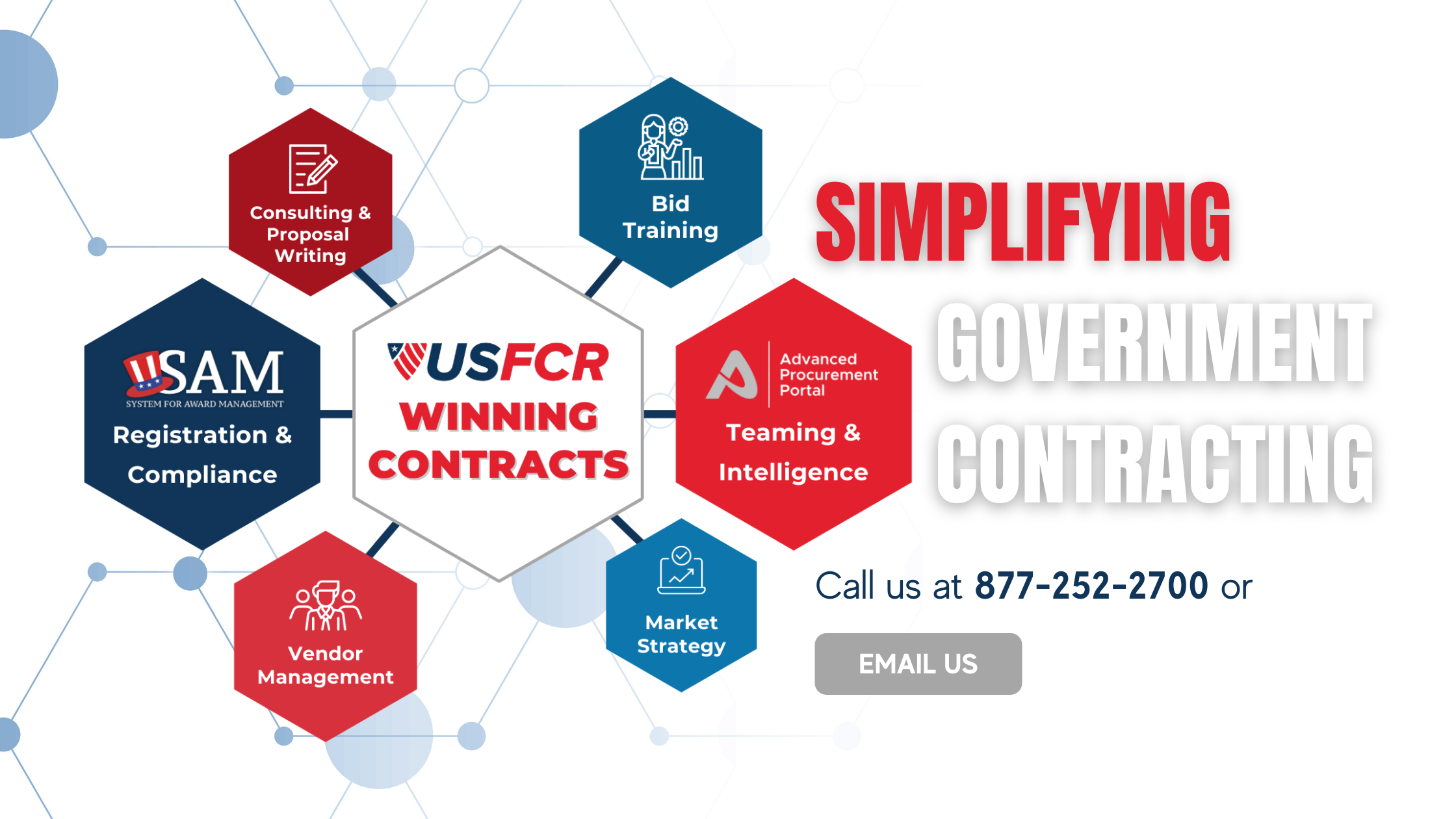
Imagine you are running your own business.
You’re working 50-60+ hours a week, managing a team, developing a customer base, and now you are trying to get into the federal marketplace.
You find out that anyone looking to solicit government contracts will need a capabilities statement. A one- or two-page document that provides a basic outline of your company and shows why you are capable of solving their problems.
Does this sound familiar?
You’ve done your research on how to draft a capabilities statement, but now you want to know what not to do. So in this post, we’ll provide seven examples of what not to do when writing a capabilities statement.
7 Things Not to Do When Writing Your Capabilities Statement
1. Don’t Forget That You Are Selling Your Company
The first thing every Contracting Officer looks for when reviewing a capabilities statement is your full legal company name.
This seems like a no-brainer; of course, you should say your company name. Well, you go by XYZ in all your branding, but your company’s full legal name is X.Y.Z. Company, Inc? What should you use in your capabilities statement?
The latter. You should always go by your full legal name when contacting federal contractors.
Remember, you have to think nationally, not just locally. Everyone in your area may know you as XYZ, but the government will only know you by your legal business name and there may be other companies that go by XYZ.
2. Don’t Prioritize Fluff Over Substance
Descriptors like “prompt,” “hard-working,” and “courteous” are expectations of anyone doing business with you, so don’t list those as core competencies or differentiators. These are just fluff to fill space.
The government also doesn’t need to know that your company was founded by your great-great-grandparents when they bought their first truck to help their neighbor move. This may be a fun story you tell your customers, but you should only list pertinent information about your company and what you offer on a capabilities statement.
Speaking of what you offer, only list what you currently offer. Don’t list what you’re hoping to be able to do or what you are planning on having access to. A capabilities statement should sell your company as it is now.
3. Don’t Leave Out Past Performance or Experience
As a third-party vendor who has been helping businesses succeed in the federal sector for over ten years, we see clients submit their capabilities statement for our review without adding any past performance or experience.
This is a big red flag for Contracting Officers.
You may be thinking, “I just started my business. Of course, I don’t have any past performance!”
Let me ask you a question, did you start a business in a field that you have never worked in before? I doubt it. Your company may not have any past experience, but you do.
According to FAR 15.305:
The evaluation should take into account past performance information regarding predecessor companies, key personnel who have relevant experience, or subcontractors that will perform major or critical aspects of the requirement when such information is relevant to the instant acquisition.
Even if you just started your company, be sure to list some references.
4. Don’t Forget to Edit
Writing is hard and once you finish your capabilities statement, you most likely don’t want to look at it anymore. Unfortunately, you really should spend some time editing your statement, maybe taking as much time to edit as it took to write.
Nothing says unprofessional as much as typos or grammatical errors.
If you don’t have an eye for editing, enlist a friend or even a professional to proofread it for you. Having another set of eyes on it can help you find errors that just slipped through the cracks.
If you are enrolled in USFCR’s Simplified Acquisition Program or Bid Training, then our team of experts will go over your capabilities statement with you to make sure you put your best foot forward.
5 & 6. Don’t Sleep on Design
This is two parts.
First, you have to remember that your capabilities statement is a piece of marketing material. You are trying to sell your business using it, and as such, you want it to look appealing.
Take the time to add a bit of design, whether that is coordinating the colors with your logo, adding simple tables, or inserting some images.
If you would like a jumpstart to the design process, there are a bunch of free resources online that you can use to spruce up your statements, like Canva or BeFunky.
However, you don’t want to focus solely on design and forget about the content. We’ve seen some beautifully designed capabilities statements that provided no relevant information on the company.
Remember to list these sections in any statement you draft: About the Company, Core Capabilities, Vendor Information (UEI, CAGE, etc.), Differentiators, and Contact Information.
Try to balance both beautiful design and engaging content.
7. Don’t Forget to Update or Customize
You’ve written, edited, and designed your capabilities statement. You’re done, right?
No.
It is a living document, meaning that you should constantly be updating it, adding to it, or customizing it for a specific proposal.
You can have multiple versions that focus on specific services or products, or you can update it to include new past performance or experience. Just know that you’ll never be “done” with your capabilities statement.
To Wrap Up
A well-written and designed capabilities statement will open doors to contracting opportunities in the federal government and set you apart from your competitors. Keeping these tips in mind when drafting yours will help you succeed in the federal sector.
If you need any help drafting your capabilities statement, then USFCR’s Bid Training program is here to help you succeed.



